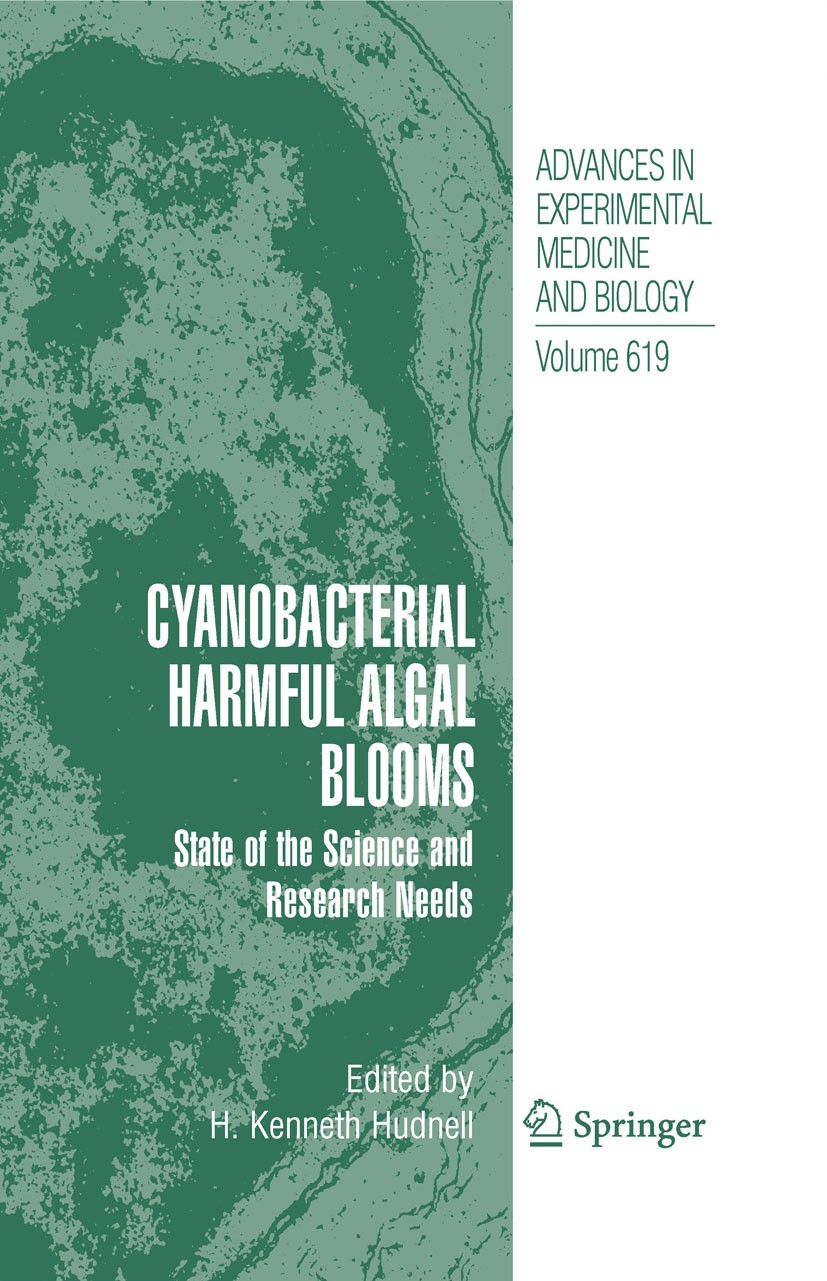| 书目名称 | Cyanobacterial Harmful Algal Blooms: State of the Science and Research Needs | | 编辑 | H. Kenneth Hudnell | | 视频video | http://file.papertrans.cn/242/241697/241697.mp4 | | 概述 | A synopsis which proposes a National Research Plan for Cyanobacteria and their Toxins.Includes supplementary material: | | 丛书名称 | Advances in Experimental Medicine and Biology | | 图书封面 |  | | 描述 | .Cyanobacteria are single-celled organisms that live in fresh, brackish, and marine water. They use sunlight to make their own food. In warm, nutrient-rich environments, microscopic cyanobacteria can grow quickly, creating blooms that spread across the water’s surface and may become visible. Because of the color, texture, and location of these blooms, the common name for cyanobacteria is blue-green algae. However, cyanobacteria are related more closely to bacteria than to algae. Cyanobacteria are found worldwide, from Brazil to China, Australia to the United States. In warmer climates, these organisms can grow year-round....Scientists have called cyanobacteria the origin of plants, and have credited cyanobacteria with providing nitrogen fertilizer for rice and beans. But blooms of cyanobacteria are not always helpful. When these blooms become harmful to the environment, animals, and humans, scientists call them cyanobacterial harmful algal blooms (CyanoHABs)....Freshwater CyanoHABs can use up the oxygen and block the sunlight that other organisms need to live. They also can produce powerful toxins that affect the brain and liver of animals and humans. Because of concerns about Cyan | | 出版日期 | Book 2008 | | 关键词 | bacteria; bacterial cell; brain; hypoxia | | 版次 | 1 | | doi | https://doi.org/10.1007/978-0-387-75865-7 | | isbn_softcover | 978-1-4939-3876-6 | | isbn_ebook | 978-0-387-75865-7Series ISSN 0065-2598 Series E-ISSN 2214-8019 | | issn_series | 0065-2598 | | copyright | The Editor(s) (if applicable) and The Author(s), under exclusive license to Springer Science+Busines |
The information of publication is updating

|
|
 |Archiver|手机版|小黑屋|
派博传思国际
( 京公网安备110108008328)
GMT+8, 2025-11-11 17:51
|Archiver|手机版|小黑屋|
派博传思国际
( 京公网安备110108008328)
GMT+8, 2025-11-11 17:51


